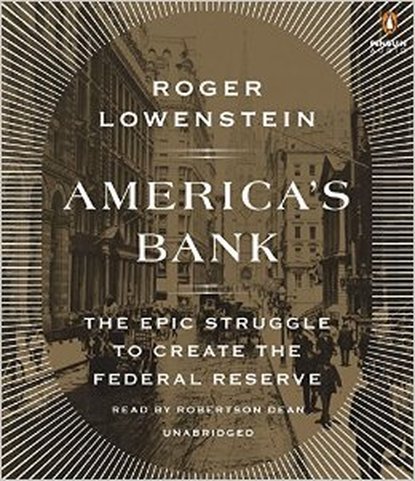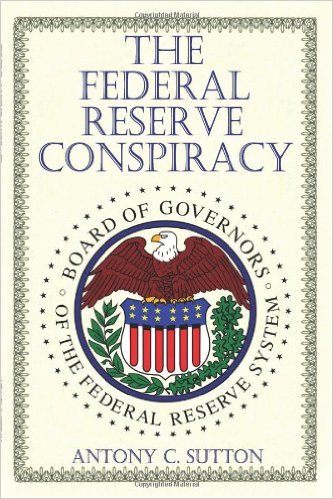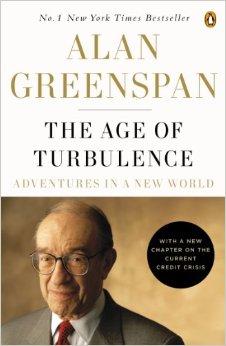|
America’s Bank: The Epic Struggle to Create the Federal Reserve
by Roger Lowenstein Published in October 2015 368 Pages Thibault’s Score: 4/5 After reading more conspiratorial accounts of the creation of the Federal Reserve, I decided to read this book to see what the mainstream historical account has recorded about the Federal Reserve. As a libertarian who is skeptical of central banking I was very biased against this book, especially when I first picked it up. Despite this, I quickly found myself rapidly engaged and forgot my ideological bias because the book was so well written. The writing style it is vivid and picturesque. The sentences are short, logical, and easy to follow. The book is very well paced: there is little repetition, and Lowenstein never fails at keeping the reader’s attention. Much to my incredible shock, I found that all the facts which had been outlined in the conspiratorial accounts were confirmed by the mainstream history! Makes me wonder if the conspiratorial writers are onto something. In fact, the only main difference in the accounts is the tone in which they were written. One book will say “the conspiring bankers met in secret to discuss the creation of the Fed” and this one will say “the heroic bankers met in secret to discuss the creation of the Fed.” For someone who read this book right after the more conspiratorial accounts, this was particularly fascinating. Lowenstein’s account explicitly mentions the Creature from Jekyll Island and other populist manifestos and does a good job of refuting them. I found the way he depicted characters such as corrupt Senator Nelson Aldridge particularly interesting. Griffon describes him as a cartoonish and corrupt and evil Republican senator - I can just imagine a top hat wearing buffoon in a turn of the century political advertisement. The image Lowenstein paints is far fairer; I especially found that the account of Aldridge’s illness towards the end of his life gave him a very human character. To me the most interesting part of the book are the early chapters which detail the world of private money that existed in the United States before the creation of the Federal Reserve. I drew many interesting mental analogies to Bitcoin and cryptocurrencies. My 8th grade history textbook made that volatile time period sound like the epitome of free market capitalism. Murray Rothbard makes that time period sound like a utopia of price stability. The world Lowenstein describes is far less cartoonish than the world’s of both my 8th grade history textbook or the libertarian paradise. The pre-Fed United States monetary system was hyper regulated and excruciatingly corrupt. It was dysfunctional, and the centralization of the Federal Reserve had incredibly beneficial for the economy. Overall, I recommend this book in certain circumstances (4/5 on my score metric). That said, the topic might not be the most interesting for a mainstream audience which hasn’t already spent significant amounts of time researching central banking. If you already understand the Federal Reserve or want to improve your grasp on American monetary policy, I strongly recommend this book.
0 Comments
The Federal Reserve Conspiracy
by Anthony C. Sutton Published in June 1995 115 Pages Thibault’s Score: 4/5 Much like in The Creature from Jekyll Island, Sutton describes the creation of the Fed hour by hour in a very conspiratorial way. His book doesn’t read like Greenspan’s autobiography all which is a dignified retelling of the events, but unlike Griffon assumes that the reader is intelligent. The book is very well written and concise. It describes the creation of the Federal Reserve very well, and doesn’t go into unnecessary detail. At a certain point the author makes bizarre claims about the origins of Marxism and tries to tie Carl Marx to central banking. I thought that chapter was a bit bizarre, but otherwise enjoyed the book. Sutton exposes the cabal of bankers that lobbied for the creation of the Federal Reserve and makes a clear and concise case against central banking. The Age of Turbulence: Adventures in a New World
by Alan Greenspan (ghostwritten by Peter Petre) Published in September 2008 576 Pages Thibault’s Score: 3/5 After reading The Creature from Jekyll Island I decided to read Alan Greenspan’s autobiography to get a more balanced perspective on the Federal Reserve. Much to my chagrin, Greenspan barely touches on the Fed and instead focuses on global macroeconomics. The style of writing is very dry and is full of technical language. Luckily, I have had a significant amount of formal economics training and understood most of the book. I doubt that someone who didn’t major in economics in college and either get straight As or spend a lot of time researching the subject matter on their own would enjoy this book. The insight’s aren’t particularly unique - Greenspan comes off as a more or less typical free marketer. I was shocked about the degree of Greenspan’s affinity for markets - he condemns economic interventionism at every step and only rarely supports statism. I feel like libertarians who portray him as a closet Keynesian have lied to me, and have never read anything Greenspan has written. On an amusing side note, Greenspan mentions meeting and being impressed by Russian economist Andrei Illarionov who once gave a talk at one of my seminars. Overall I don’t really recommend this book - it isn’t particularly interesting but isn’t particularly bad either. It comes down as a solid “3.” |
Thibault SerletMost of my articles are book reviews, but I also write about many other topics. Archives
December 2023
Categories |



 RSS Feed
RSS Feed